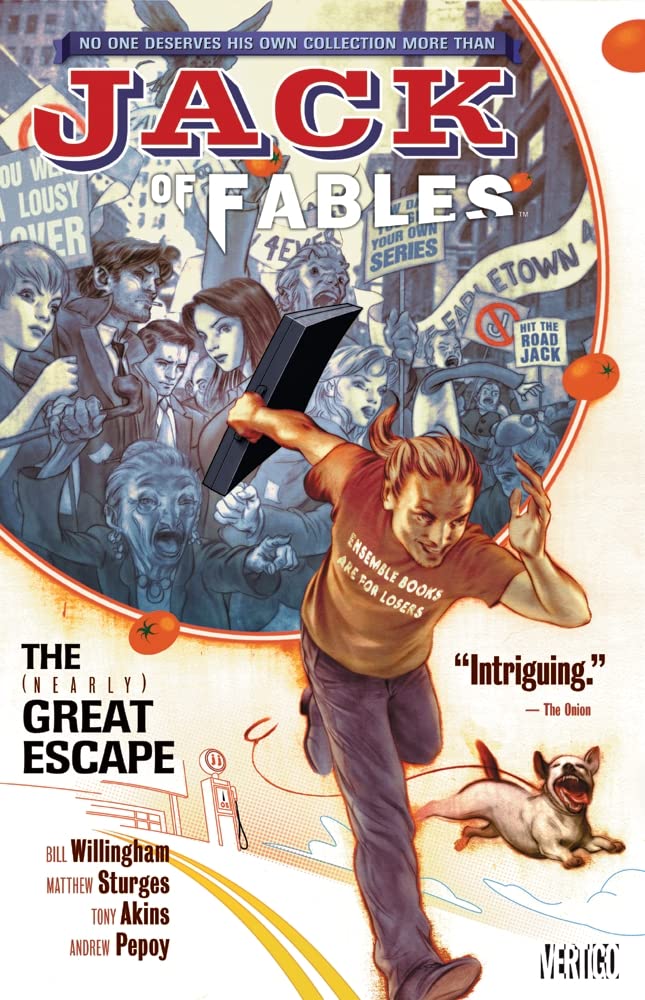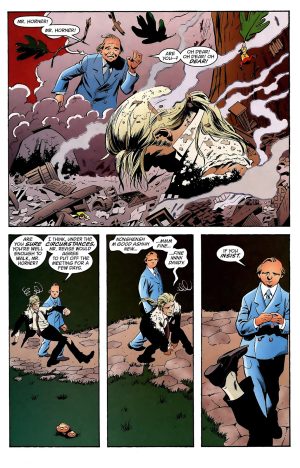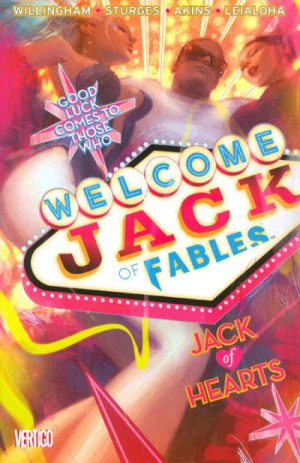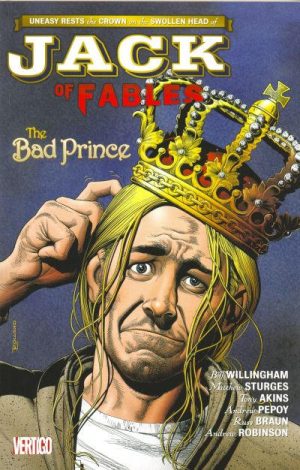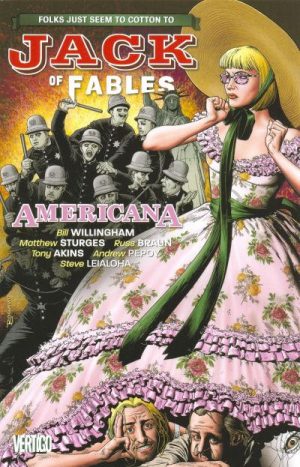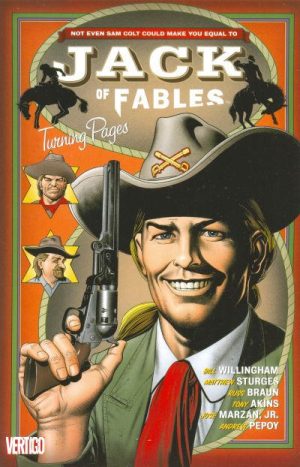Review by Frank Plowright
As part of his preparation for Fables, Bill Willingham took the decision that multiple stories about someone named Jack in fairy tales and nursery rhymes were about the same person. He was a rogue, but not without charm, and he became Fables’ breakout character, at which point he was removed from the main series and given his own. The turning point was drawing attention to the Fables community via living a dissolute life as a Hollywood film mogul, and the outcome was his banishment.
It’s not long before Jack’s abducted and brought to a community not unlike that maintained in New York, but rural and run by a warden more than capable of dealing with him. Also introduced is Priscilla, the warden’s retrieval agent, and Gary, or the Pathetic Fallacy, a clever joke using the term applied to the literary device of applying human emotion to natural objects. He’s unassuming, and able to talk to inanimate objects. Despite evidence to the contrary, Jack considers he’ll have little trouble escaping.
The cast are well conceived, but The (Nearly) Great Escape doesn’t approach the best of Fables, and there are a couple of primary reasons. Firstly, Willingham is spreading his attention and collaborating with Matthew Sturges. A constant joy of Fables is the unpredictability, and there’s little here that isn’t predictable from Jack’s swaggering overconfidence to the cartoon responses of the warden. Diving deeper into the series proves Sturges isn’t an imaginative writer or a sophisticated storyteller. However, he’s also stuck with the problem of Jack not being an attractive lead character. In Fables he was part of an ensemble of strong personalities, and bounced off others of equal magnitude. In Jack of Fables his unpleasant self-aware smugness and sometimes plain offensive personality lacks barriers and he rapidly becomes tiresome. The best of this volume is when the attention spreads across other people.
Artist Tony Akins has filled in on Fables, and after a shaky start he and inker Andrew Pepoy hit a rhythm, so by the end the art is clean and attractive with people well defined. Akins turns in some nice designs, especially the weak looking Gary and a grumpy, fractured Humpty Dumpty, and a strength is his ability to give life to the inanimate.
One standby established here serves the series well throughout. Every chapter ends with Jack’s self-aggrandising summary of the next, and unlike his boastful narrative captions these are supplied to have every reader ask whether the events related will actually occur. They generally do, and they can be funny. Occasional funny moments just about raise The (Nearly) Great Escape just beyond average, and Jack of Hearts is next. Alternatively they’re combined in the first Jack of Fables Deluxe Edition.
